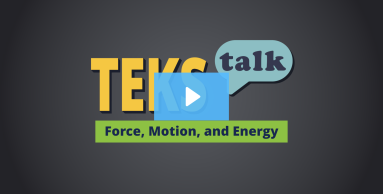- Science
- Grade 6
- Force, motion, and energy
Back to TEKS search
Science.6.7.A
The student is expected to identify and explain how forces act on objects, including gravity, friction, magnetism, applied forces, and normal forces, using real-world applications;

Knowledge and Skills Statement
Force, motion, and energy. The student knows the nature of forces and their role in systems that experience stability or change.
Supporting Information
Research
Darling, Gerald. “How Does Force Affect Motion?” Science and Children 50, no. 2 (October 2012): 50–53. https://www.nsta.org/science-and-children#tab.
Summary: Beginning with uncovering misconceptions, this article dives into four forces: friction, gravity, push/pull, and magnetism, and how they can be explored using everyday objects.
